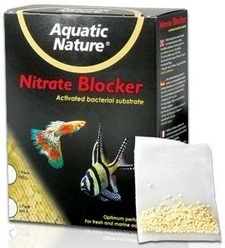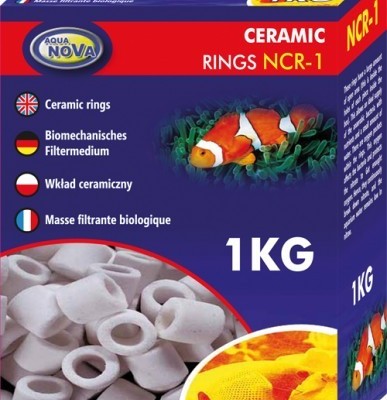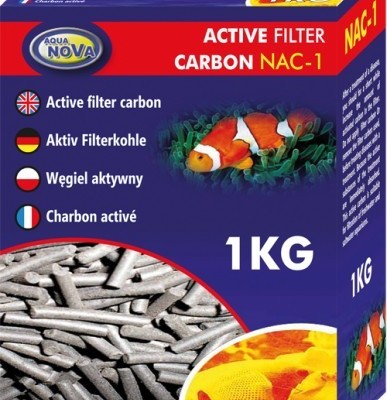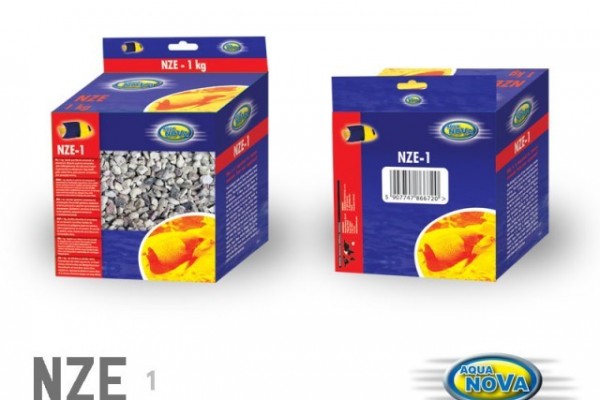Aquatic Nature Nitrate Blocker


Nitrate Blocker is a multi-functional medium for useful bacterial sources. The anaerobe zones have special physical properties (so-called denitrifying bridges). These special properties enables bacteria sources to strongly reduce the nitrate level.
In this anaerobe area, the denitrificating bacteria are highly active. These bacterial sources convert nitrogen (NO3−) into molecular nitrogen (N2) , which is then evaporated into the atmosphere. This process is the so-called nitrate breathing.
Ammonia reducing cycle NH3 NH4+ → NO2− → NO3 → N2
Nitrate reducing cycle : 2 NO3− + 4 H+ + 4 e− → 2 NO2− + 2 H2O
Nitrite reducing cycle : NO2− + 4 H+ + 2 e− → 2 NO + 2 H2O
A heterogeneous pore size and a molecular bridge structure are the area for active bacteria colonization. The useful surface is approx. 350 m2 per litre. Nitrate Blocker is a media with an activated surface for the bacteria sources, operating in aerobe and anaerobe zones.
How to use :
Nitrate Blocker can be used in all filter-systems for fresh- and marine water aquariums. Rinse the Nitrate Blocker under running water. Position the Nitrate Blocker between 2 layers of filter cotton wool and make sure Nitrate Blocker always has a running water flow. This promotes the functionality of Nitrate Blocker.
The content of one small package is appropriated for aquariums up to 100 litres. The 3-pack is appropriated for aquariums up to 300 litres. Overdosing is not harmful, while a bigger surface is offered to functional bacteria sources.
When to replace:
The colouration of the Nitrate Blocker is an indicator of the function or when it has to be replaced :
– Terra-cotta is the indication of optimal colonization and optimal functionality.
– Dark brown up to black is the indicator of replacing the Nitrate Blocker.
The life time of Nitrate Blocker depends on the fish population and their feeding.
The active lifetime of the Nitrate Blocker is approx. 3 to 6 months (depending on the way of feeding and fish population.)



